Strava vs AllTrails: the two outdoor activity apps pitted against each other
It's Strava vs AllTrails: what are the pros and cons of two leading online platforms for runners, hikers and cyclists?
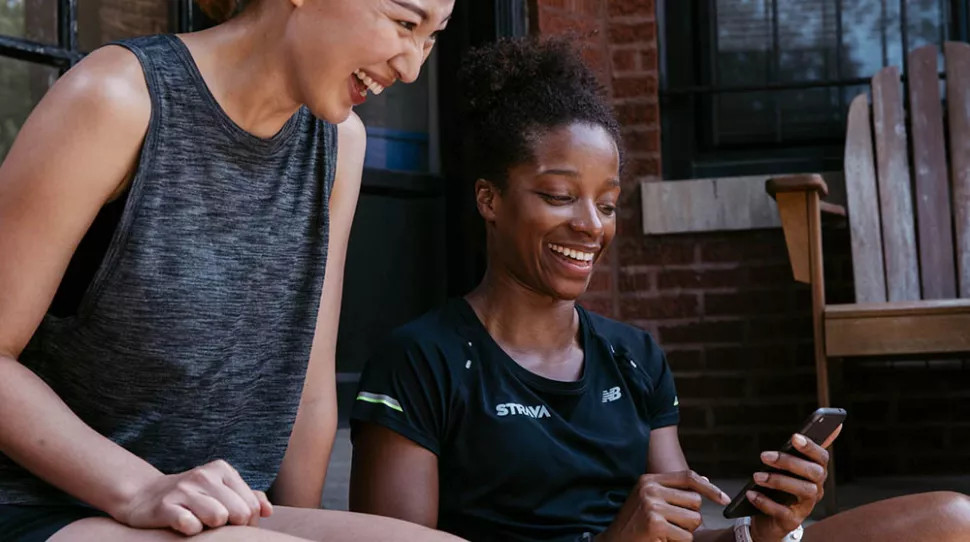
In May 2024, AllTrails announced that it would give all users three months' free access to the Calm sleep and meditation app as part of Mental Health Month. Find out how to get your free subscription.
Strava vs AllTrails: the battle of the big online route platforms. As running, hiking and cycling are three of our most popular outdoor activities, it makes sense to put these two giants up against each other and to find out how well they cater for the needs of users.
Strava and AllTrails both give you access to a huge collection of trails and routes for outdoor activities like running, hiking and cycling. They also connect you to a huge community of like-minded people, but which one is right for you?
In this guide, we'll break down all the key similarities and differences between the two, including their paid membership options, so you can make the best choice.
Today's best deals
Meet the expert

Two of Fiona's main passions are trail running and hiking, preferably with her dog along for the day. She loves nothing more than exploring the trails and mountains of the Scottish Highlands and often puts digital mapping and route planning applications to good use when doing so.
What is Strava?
- Strava is an app and online platform for tracking physical exercise
- Most users are runners and cyclists, with more than 100 million users
- It has a popular Facebook-style feed, where you can view fellow athlete's completed workouts
- There's a free version, as well as a subscription model
Strava, which is billed 'the network for athletes', was launched in 2009 as an internet service for tracking physical exercise. It uses Global Positioning System (GPS) data. The majority of users are runners and cyclists, although you can track many other types of exercise. Incredibly, it has over 100 million users worldwide.
One of the main features of Strava is “segments”. Segments are designated specific features or portions of a route, such as a climb, a tricky stretch of trail or part of an open-water swim.
Each time you complete a segment, the time is recorded. With a Strava Premium subscription (see below), you can compare your segment time to previous efforts and those of friends and other athletes.
The platforms also incorporates social network features. Like Facebook or Instagram, users can give 'kudos' to other people’s performances and also comment on people’s activities.
All the latest inspiration, tips and guides to help you plan your next Advnture!
You can upload photos of your activity so it's possible to keep track of where you have run or walked, as well as showcasing to others what the route is like.
The routes that are recorded by users are accessible to view and for other people to follow. Details of the routes can also be downloaded as a file, such as GPX, for use by other people. However, the features available depend on whether you pay for the app, or you a free version.
There's also a 'heatmap' feature that shows the location of where more routes have been run, cycled, or walked.
There are some limited search filters, such as for athletes or segments, but this isn't the same as searches on apps such as AllTrails, where you can search for routes all over the world and with filters, such as location, distance or graded difficulty.
Strava can be used on desktop, or as an app on your smartphone. It is both iOS and Android compatible.
There is a free model, as well as premium paid-for subscription plan.
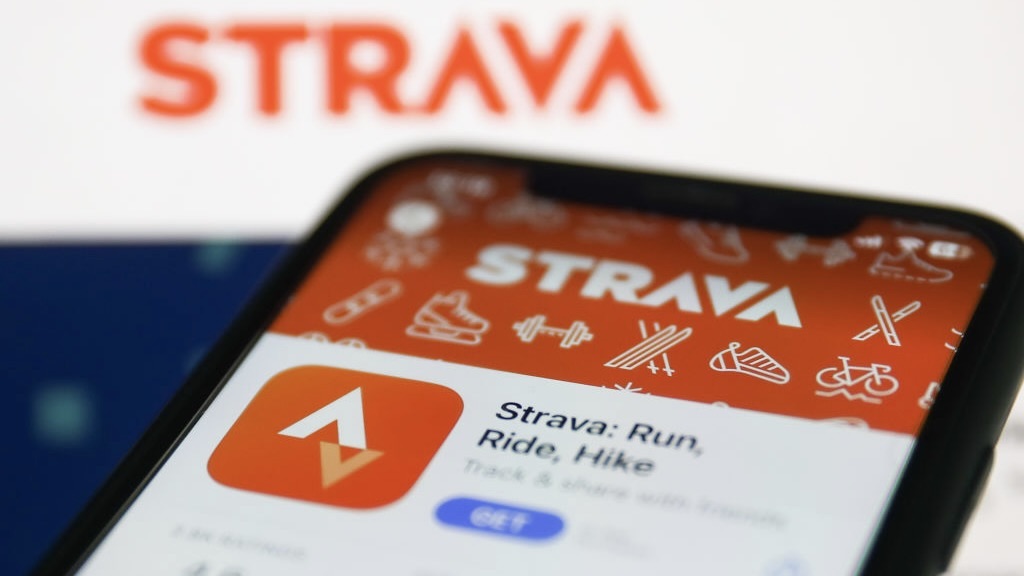
The growth of Strava
- Strava was originally aimed a cyclists but found huge success with runners from 2017 onwards
- In 2023, Strava surpassed 100 million users
At the start, Strava was aimed at cyclists but then, in 2017, the platform added more social features. After this, and with a change of CEO, Strava started to offer new forms of tracking for runners, as well as other activities like hiking, indoor rowing etc.
Looking at the stats, in 2023, Strava surpassed 100 million active users, with over 2,500 professional athletes using its services too. As of June 2023, more than 7 billion activities have been shared on the platform since it was founded.
How much does Strava cost?
- Strava is free but to access the full set of features it comes at a cost
- In the UK, full access costs £8.99 per month or £54.99 per year
- In the US, full access costs $11.99 per month or $79.99 per year
- Various features come with a subscription, including the ability to plan routes
You can use Strava for free, but to access the full set of features you'll need a subscription. In the UK, Strava Premium subscribers pay £8.99 per month or £54.99 per year. In the US, the costs are $11.99 per month or $79.99 per year. Students pay 50%.
For the Premium cost there are is a long list of features, including access to segment information such as leaderboards, as well as training logs, cumulative stats, a safety beacon with live location tracking, customised goals, performance analysis, grade adjusted pace, weather forecast and some retail discount perks.
However, one of the main features that attracts many people to pay for premium is the mapping. For example, you have the ability to download a file, such as GPX of someone else’s route.
If you have Premium membership, you can also create routes from scratch on the website or automatically generate routes from the mobile app. Offline route maps are also available to download to your phone for offline use.
In addition, personal heatmaps can be accessed, which provide a view of the places you have run.

Pros of Strava
- It's a great way to track activities and progress
- It's nice to see what your friends are upto and provides and interesting insight into elite athletes you follow
- Heatmaps provide useful information on new areas you might want to explore
The main pros of Strava are that it’s easy and free to track and log a wide range of activities and it's a useful tool for keeping a record of your own progress. You don’t need a GPS watch to find out the pace you are running or cycling at, instead you just need a phone.
The app provides huge amounts of training data, from the basics such as distance, elevation and pace to grade adjusted pace, heart rate, cadence and segment comparisons. Plus, if you pay for a subscription there is a great deal of training analysis to access. For example, you can follow 'trends' in your training. Strava allows you to compare like-for-like routes.
It's always nice to see what your friends are upto, whether it’s a run, walk, cycle or yoga session. It’s a social media network for active people. If you're interested in what the elite are up to, you can see what the professional athletes are doing if you follow them on the platform. This can all provide motivation. Seeing other people out exploring and training can motivate you to do the same, or similar. Plus, segments – although not for everything – are a feature that some people find motivating and use as encouragement to go out and set new faster times.
Other features such as mapping, downloading other’s routes and heatmaps are really useful if you are looking for new places to run, cycle, walk or swim.
Cons of Strava
- Strava can be intimidating to some users who may feel judged by their performance
- People often curate what goes onto their Strava profile, creating a false impression
- The route finding ability is limited compared to some apps
Strava is aimed more at dedicated athletes than more casual runners and cyclists and, for some, the app can feel intimidating. Rather than providing motivation, seeing all the activities that others post can end up making some people feel de-motivated. For many, there's a fear of being judged by other users.
It's not unheard of for people to not upload their slower or shorter runs, or hide some of the details, because they worry they will be judged by other people. As with all social media platforms, you only get a curated glimpse of other users' lives and training, which can give you a false impression.
If you're looking for new routes to follow, the search facility is limited compared to other apps, such as AllTrails.
As many runs are recorded straight from people's homes, there were potential privacy issues, as the platform shows a route from start to finish. However, the platform has recently made it possible for you to hide the start point of a run.
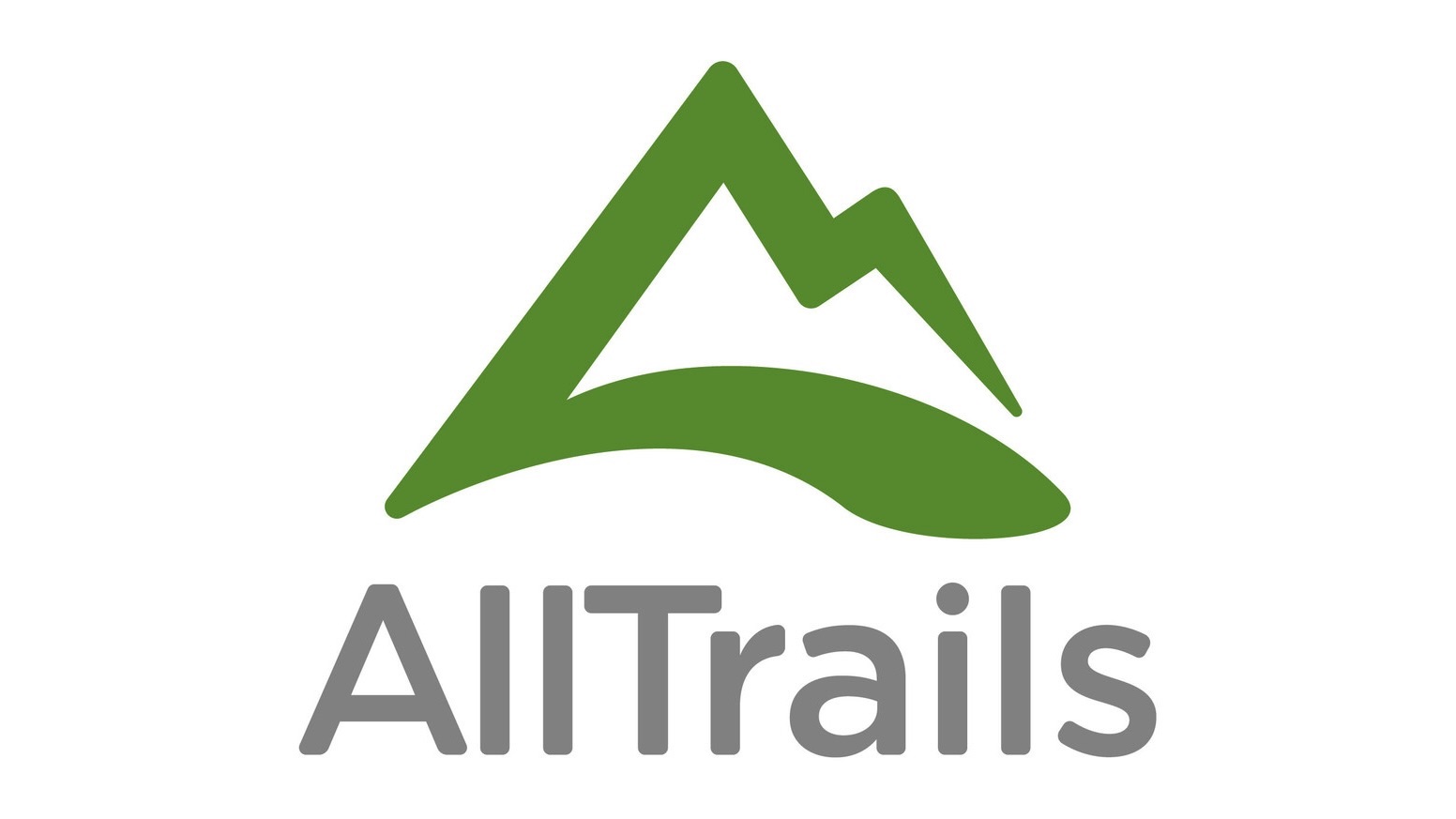
What is AllTrails?
- AllTrails is a platform with a huge database of mapped trail routes
- Trails are graded in terms of difficulty and key stats are provided
- It also allows you to connect with the AllTrails community, sharing routes, photos, etc.
AllTrails is a platform with a huge database of mapped trail routes, which includes those created, generated and suggested by people who like to hike, cycle, climb and ski. It can be accessed on a desktop and also as a mobile phone app, available in both Android and iOS versions.
To use the desktop version or the app, you search for a location to discover a long list of trail suggestions. The focus is on places to go and views to see. Each trail is graded for difficulty and includes distance, elevation gain, a map, directions of how to get to the start of the route, plus an overview of what to expect on the route.
The AllTrails app also allows you to connect with a community of people. You can share your activity experiences with members, or see what they are sharing. You can also see photos taken by other people who have done the route, reviews by others, plus a weather forecast. The routes are not offered with step-by-step details of how to navigate.
The growth of AllTrails
- AllTrails has over 50 million members globally
- There are over 300,000 curated trails worldwide
Founded in 2010, the app now has over 50 million members globally. AllTrails provides information over 300,000 curated trails worldwide.
In 2023, AllTrails revealed a new look, brand identity and more inclusive and connected community features. The platform now has a fresher look, and the name of paid-for membership was changed from AllTrails Pro to AllTrails+.
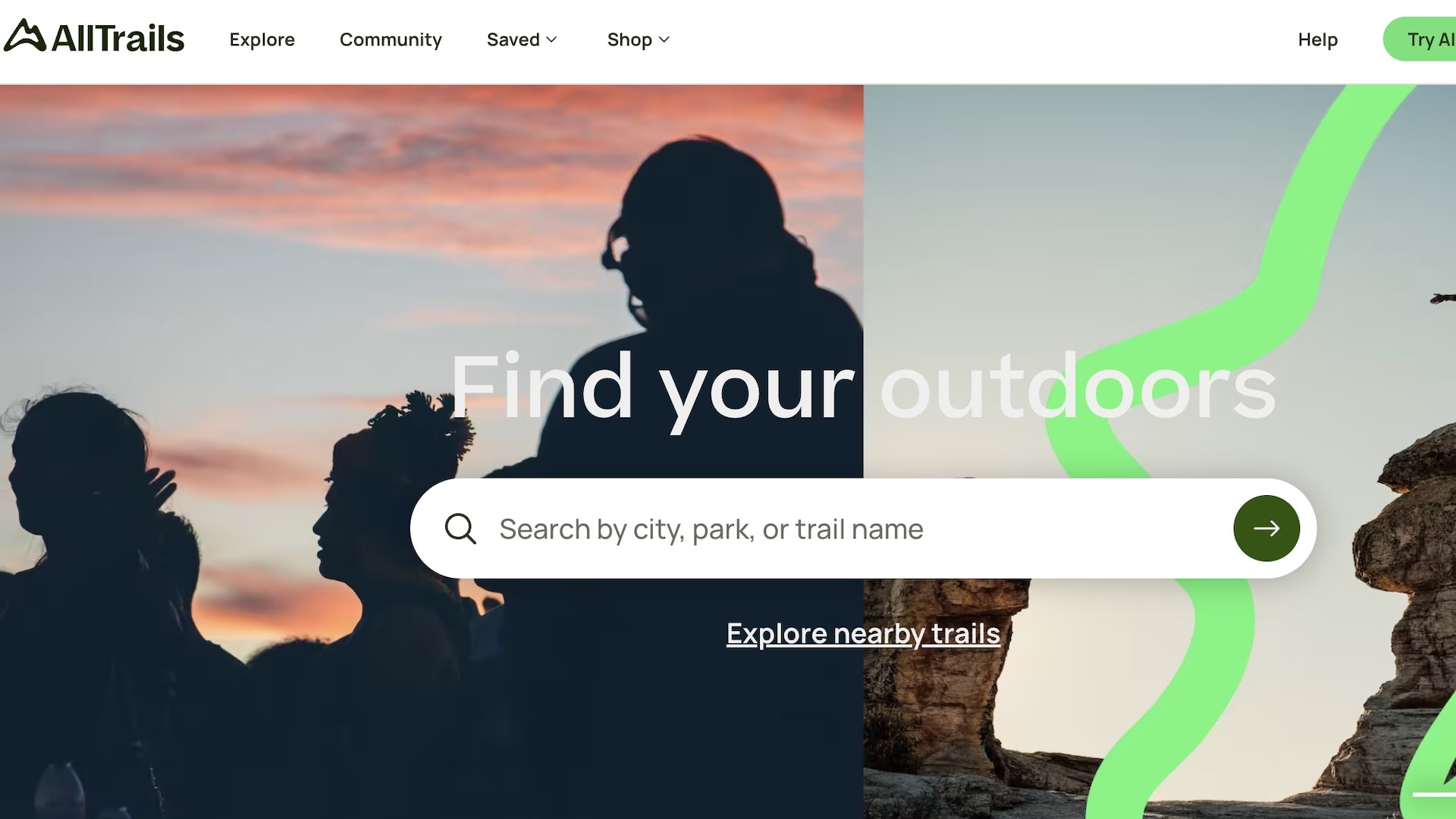
How much does AllTrails cost?
- The free version allows users to search for routes around the world
- Users can create customized maps on the online platform
- Users can track their own activities
- In the UK, an AllTrails+ membership costs £29.99 per year or £2.50 per month
- In the US, an AllTrails+ membership costs $35.99 per year or $2.99 per month
- AllTrails+ provides offline mapping, live location tracking and heatmaps
The free version of AllTrails is a basic membership that allows you to search for routes around the world. You can filter trails by activity, experience level, length, and elevation gain. Users access maps online and can create customized maps and then use them in the app. It’s also possible to record and track your own activities and then add details about the route, such as the terrain, trail conditions, as well as reviewing and adding photos. All the routes and experiences can be shared with other people on the map through other social media platforms, such as Facebook and Instagram.
The AllTrails+ membership costs £29.99 per year or £2.50 per month in the UK, and $35.99 per year or $2.99 per month in the US.
Members get the ability to have access mapping offline. Other features include heat maps, which show the routes that are most or least popular according to user input – plus an index for air quality and pollution, pollen count and satellite weather forecasts.
The AllTrails+ version offers off-route notifications to keep you on track while you re walking or running, as well as a lifeline feature so that family and friends know your location. If you pay for the pro versos you can avoid adverts.
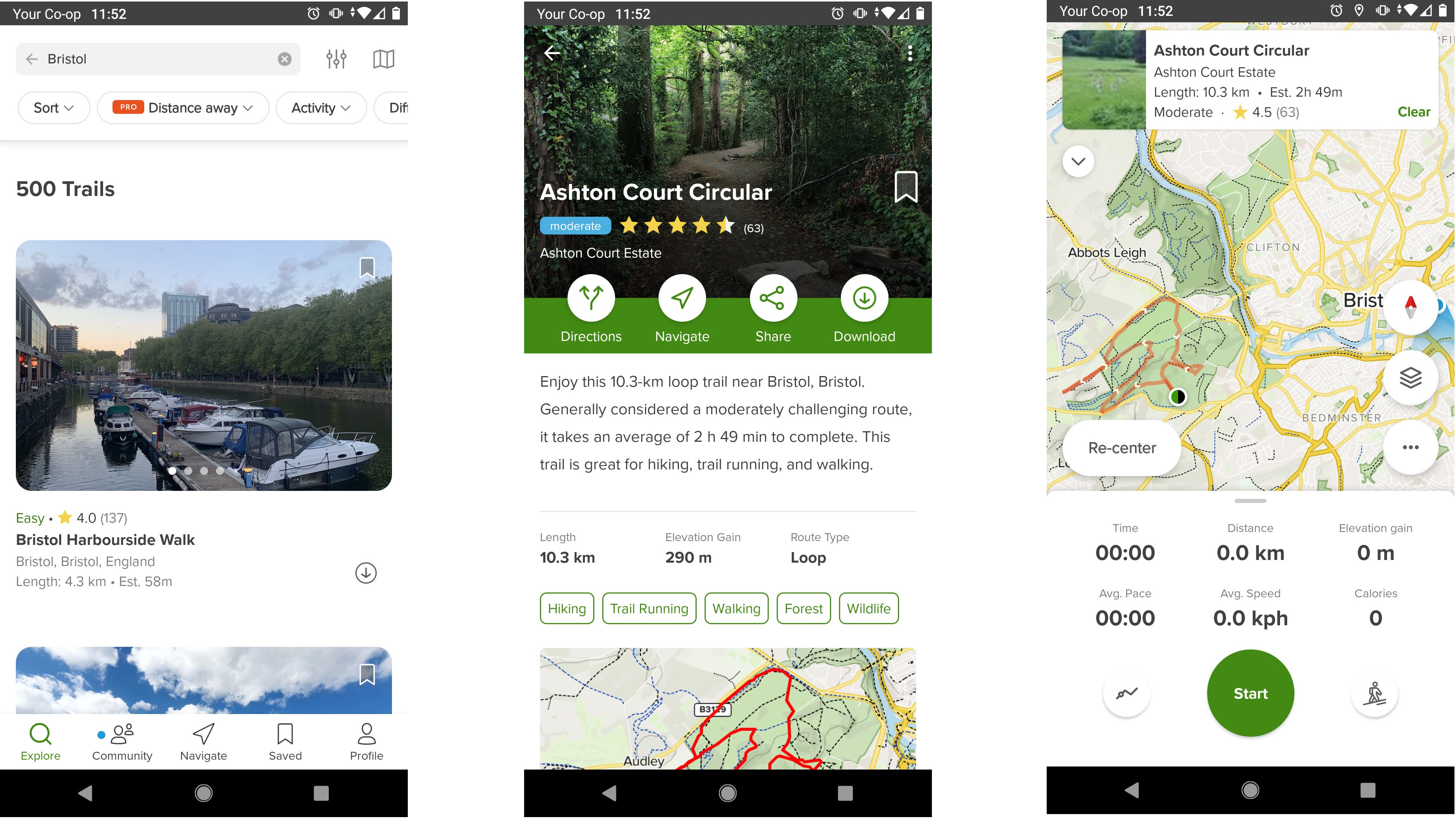
Pros of AllTrails
- AllTrails makes it easy to access its huge library of routes
- You can match routes to your fitness and aspirations
- The route mapping features allow you to create your own routes
AllTrails has a modern look and feel, hosting a database with more than 300,000 trail routes across the world. The platform really makes it easy to find trails according to area, or location, activity and grades. There are many filters for searches so that you can find a route to suit your experience, fitness levels and aspirations and you can find reviews and details written by a community of like-minded outdoors people.
You can also create your own maps using the free map creation tool, using either the smart routing or drawing mode. Smart routing automatically fills in the route between chosen waypoints based on the available ways. Meanwhile, in drawing mode, you have more precise control to freely draw your route. Route planning is available for hiking, mountain biking, bike touring, road biking, OHV/Off-road driving and scenic driving.
Cons of AllTrails
- No offline maps without a subscription
- Detailed information about routes is often limited
Offline maps are available for paid-up AllTrails+ members only, which means that if you have the free membership you can't use the maps on the app unless you have mobile phone reception.
There’s often limited information about how to actually complete some of the routes, unless the person who uploads the route gives more detail, which means that, if you want more than a basic overview of the route, you’ll need to source these details elsewhere.
Strava versus AllTrails: the verdict
- Strava is more focussed on training and competition
- AllTrails is a tool designed for finding routes
- Both have social features, with Strava being more like a "Facebook for runners"
While Strava and AllTrails are both useful platforms for people who enjoy being active outdoors, they have some distinct differences.
Strava is focused more on the training aspect of running, cycling and other sports. It's a place to log miles and "segments". Strava is often used as a place to compare like-for-like routes on your own and with others. There is more of a "competitive" feel to the app and while some users will find this intimidating, others like the motivation to do more or push themselves harder. There's a limited search facility, if you are looking for new ideas for routes, however this is not the same as searching the large database of routes offered on the AllTrails app.
AllTrails is an app for discovering new places to be active, whether you are a hiker, runner, cyclist or enjoy another sport. You can search for routes via many different filters, such as distance, elevation, perceived difficulty.
Each app has more features if you pay for a premium subscription.
Strava and AllTrails both have social elements to them. Strava is more akin to social media platforms such as Facebook and Instagram and there are some advantages – and disadvantages – of this format.
Why not give both Strava and AllTrails a try to see whether you like the apps, or not, and before paying for features?
- Best trail running shoes: tested for comfort, speed, stability and grip

Fiona Russell is a widely published adventure journalist and blogger, better known as Fiona Outdoors. She is based in Scotland and is an all-round outdoors enthusiast with favorite activities including trail running, mountain walking, mountain biking, road cycling, triathlon and skiing (both downhill and backcountry). Aside from her own adventures, Fiona's biggest aim is to inspire others to enjoy getting outside and exploring, especially through her writing. She is also rarely seen without a running skort! Find out more at Fiona Outdoors.
